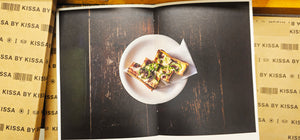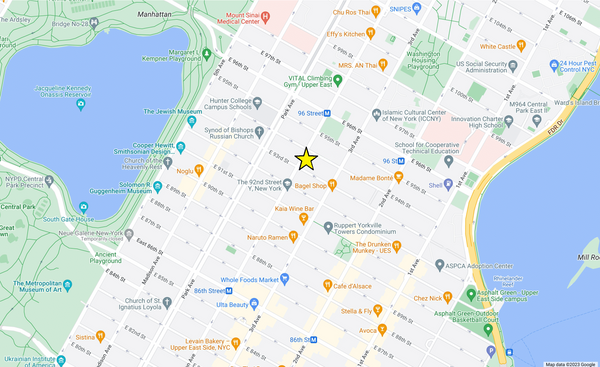CRAIG MOD ON CAPTURING JAPAN’S VANISHING CAFE CULTURE
Apr 06, 2024
FOOD & CULTURE • Q + A
Embarking on an extraordinary journey along Japan's Nakasendō historic highway, Craig Mod's Kissa by Kissa unravels the stories embedded within the fabric of the country’s traditional coffee shops, also known as kissaten. In this exclusive excerpt from the book, we encounter Kumata, a quaint kissaten in Kiso-Fukushima run by the kindly Mr. and Mama Kumata.
I had asked if they had pizza toast. They did. They laughed, found it ridiculous that, of all the items on their menu, I'd call out pizza toast. But, sure, they'd be ready for me.
So it was a great surprise when the next morning they presented me with an entire pizza. "We didn't think you'd want just pizza toast," Mrs. Kumata – who insisted on being called "Mama" – said to me as she emerged from the kitchen with a thin-crust pie on a plate. I didn't have the heart to tell them that pizza toast was everything. Was a totem. That pizza toast was the great unifier, the healer of this modern walker. That pizza toast was more than just pizza toast. It was the underdog fighting Pachinko Road. A food that had been forged in some bizarro cultural oven wedged between American GIs and poverty that somehow managed to shed all of that baggage over the years. It was unique, a quirk of reality. And most importantly: It was delicious. But I didn't say any of that. I accepted their offering with a smile and perhaps even tears in my eyes and, with much appreciation, had a pizza for breakfast. Pizza made with ketchup and sausage, onions, and three types of cheese. It was the most heartfelt pizza I ever ate.
As I ate the soggy pie, the two told me of their lives: Fifty-two years of running this kissa, the Kumatas. Mr. Kumata was Tokyo born and raised, but because of the war, his family fled out here to avoid the firebombings. Mama was a local, her father an important governing official. Mr. Kumata moved fast. Mama was moony, a joyful ragdoll. They've now been married fifty-eight years, but they laugh like they just met yesterday, like the wooing was still ongoing. Both are in their eighties and ski at least thirty times a season. Thirty. “Have to get our money's worth for the season lift ticket."
They have children and grandchildren. But they're all in Tokyo, “where the opportunity is." I asked if their kids would take over the shop when they were gone and Mr. Kumata balked. No, he said, they had raised their kids well so they wouldn't have to run a kissa. The shop was full of knick-knacks. I poked around. Finished the pizza. Ordered some toast. I couldn't bring myself to order pizza toast. The toast came out and Mama did a little dance for me. She had excellent knees, knees still capable of skiing. I was impressed and intimidated. I photographed her, she hid her face behind her hands. The toast was grade-A kissa toast, cut thick and largely nutrient-free. I loved it and loved them.
Sitting in the dark and chilled Kumata, surrounded by bear sculptures and a fake fireplace, I felt repose, like the great walking liturgy was resolving itself, and though there'd always be more Pachinko Road, for the moment it felt like a lifetime away. I was grateful to be looking at what remained of kissa culture straight in the eye. It wasn't long for the world, and I certainly couldn't save it.
But at least I was bearing witness. That felt like something. The to-be-walked kilometers that day hovered somewhere in the thirties. I hemmed and hawed. Mr. Kumata wanted to keep chatting "Stay," he said. He wanted to tell me more stories, but Mama shut his trap. She picked me up by the elbow and started to shove me out the door. The top of her head barely came up to my bicep. She winked. "Let the boy walk, darling.”



As the book’s fifth printing continues to impress and resonate with new readers, here we catch up with Mod to explore the intricate layers of his bookmaking process, the evolution of his walking projects, and connections of food to time and place.
![]()
Your book is often described as an "object" and an "artifact." How did you approach the physical design and production to elevate it beyond a traditional book?
I think books — ANY BOOK! — are gorgeous, amazing, near-perfect pieces of technology. The goal with my books is simple: produce/discover the best container for the work, and with that, the best experience for the reader. Because my books are a mix of photobook + essays, this means that in practice the best container is one that lies flat, feels great in hand, has beautiful paper and is printed on high-resolution Heidelberg presses. So we end up with cloth-bound, silk-screened covers on amazing Japanese matte papers.
My goal is not to sell 100,000 books to random folks, but rather 1,000 books to the best readers. Because of this, I can work with well-paid local artisans, printers, and binders. That means the books are more expensive, but because I’m aiming for thousands of sales, not hundreds of thousands, it seems to work. I still can’t believe Kissa is in its fifth printing. I’m exceedingly grateful for everyone who has supported this book and my work.
Kissa by Kissa has undergone multiple editions, each with unique features. What inspired the iterative evolution, balancing its core ideas while introducing new elements?
The core of the text and images has stayed the same (with the exception of one or two typographic fixes). And the dimensions have also stayed the same — standard B5. But I switched printers between editions two and three, and in doing so started to play with different bindings.
The third edition had a so-called “Swiss binding” where the body-block is only glued to the back cover board, allowing for an exposed spine when you open the book. I loved this kind of binding. It has the benefit of allowing the book to open every-so-slightly-more-easily, but it confused a lot of readers (“I love the book but it’s broken!”) so we switched to a beautiful lay-flat smyth-sewn binding with the body block attached to both cover boards. It still has the same lay-flatness, but with less customer support.
I want every spread to lay flat, because it’s a joy to read a book that lays flat. I want the book to feel supple in hand, hence the cloth binding atop thin boards. I want a book to bend. But I also want it protected. I think we achieved that using silk-screen printing on cloth. It’s extremely robust. And the materials patina over time in a pleasing way (unlike paper covers which tend to fall apart).
The other point of iteration has been the cover. I’ve been working with illustrator Luis Mendo for over a decade, and had wanted to do a full-bleed illustrative cover since the first edition — we just didn’t quite have enough time to pull it off. So in 2023 I hired him once again to illustrate the entire cover boards, wrapping around front-to-back, of the interior of one of the kissas featured in the book. (Which has since closed.) I think it looks amazing.
And then for the fifth edition, we added an extra color — white — to give the illustration just a bit more depth. The original plan was to highlight the shadows of the image, but after a few tests, we realized that was too heavy, and landed on highlighting … the light. Which is sensible, and I think produced a beautiful, subtle effect of depth.
Each time we go to press is another opportunity to iterate or tweak, bringing the book closer to some kind of “final” vision. I think this fifth edition of Kissa by Kissa is very close.
The walk in your book is both a physical journey and a cultural exploration. How did encounters with cafe owners and locals shape the narrative, and why did you choose kissaten as a focal point?
It was mostly accidental. As I walked, the deeper into the countryside I got, the fewer and fewer shops remained. Living in Tokyo, you have no sense that Japan is a depopulating country, or aging country. But then you hit the countryside villages, and places that were vibrant just ten or twenty years ago are ghost-like. What remains? Kissaten, barber shops, post offices. That’s about it. A lot of the train stations aren’t even helmed. So it was by necessity that I ended up in a kissa each day, usually eating pizza toast.

The concept of pizza toast is a recurring theme, but beyond that, how did the local food and cooking become significant threads in the narrative, and what role do they play in preserving cultural memories?
It’s a strange food, for sure, to think of it as preserving cultural memories. Japanese culinary history goes back centuries if not millennia. Pizza toast is basically still embryonic on Japan’s grander culinary timeline. But it is real, and exists mainly because of two things: 1) post war austerity, and 2) the influx of wheat around the port of Nagoya, and with it an explosion in bread.
What I love about some of my walks is that I can have pizza toast in the afternoon and then a full-on kaiseki set menu at night — staying at one of the rare remaining inns along the old routes. It’s a great contrast. Almost like time traveling with your mouth.
How did you navigate maintaining a cohesive narrative across diverse genres in a blend of travelogue, photo book, and ethnographic study, especially when delving into the culinary aspects?
Did I?! Ha ha. Well, I am grateful if it comes off that way. I start with diary-like notes. Work that into a story as I photograph. And then do basic layouts on my floor — looking for image / text pairings. Followed by significant rewrites and edits and additions. Lots of iterations. Lots of printing. Lots of walking on the book in my studio. Mostly, I am grateful for the editorial help (on the text and photo selection) I have on books like this. It’s a lot to get right on your own.
Your journey with Kissa by Kissa began with an undefined plan. How did it evolve from a potential print on demand book to a refined, handcrafted artifact, and what inspired this shift?
It began as a piece for Eater, which was then significantly expanded and modified with an eye towards print on demand. But then Covid hit, and I had more time on my hands, and thought it would be fun to find a “platonic ideal” for the form of this book. Hence hunting down a printer and binder in Japan (where I’ve lived for decades) that I could work with iteratively. (Lots of iteration on projects like this, on all aspects.) I’m grateful for that opportunity (Covid was painful in many ways but also a welcome release from a surfeit of obligations in others) to really sit with the text, the shape of the book, and work intimately with a printer to have it all come together. So, this is very much a Covid book.
Your journey in Kissa by Kissa intertwines with local cuisines. How do you see the connection between food and travel, and what role does culinary exploration play in understanding and connecting with the cultures you encounter along your walks?
One of the great joys of eating Japanese food — this spans super fancy kaiseki to simple set menus — is that it often aligns directly with seasonality/nature, much more so than anything I grew up with. I mean, I was raised with Chef Boyardee accounting for 50% of my caloric intake. There was no concept of a “season” for me in the food realm. SpaghettiOs are always "fresh." So if you’re traveling somewhere, I feel the greatest respect you can pay to that locale is to engage with its food on their terms. Sometimes, you can be cheeky and extend this to stuff like McDonald’s. I got some fries at the central train station in Milano a few years ago and they were impressively terrible. Like, wow, Italy, good job making the worst McDonald’s fries I’ve ever had. (McDonald’s fries in Japan are, as you’d expect, pretty much perfect, though I think Freshness Burger’s are even better.)
Even the toast served with "morning sets" — different areas of Japan do it differently, subtle indications of a bit more sweetness on this side of the archipelago vs the other side. Another way to think about it: Food encodes culture. And by eating and paying close attention, you can debug or decompile strands of culture that led to x or y ending up in your mouth. It’s a delightful puzzle. And often a delicious one, too.



